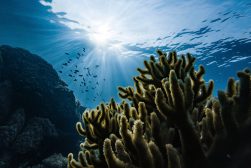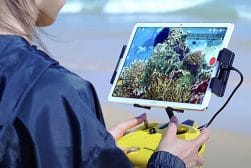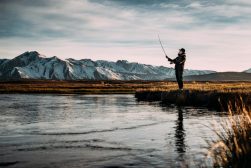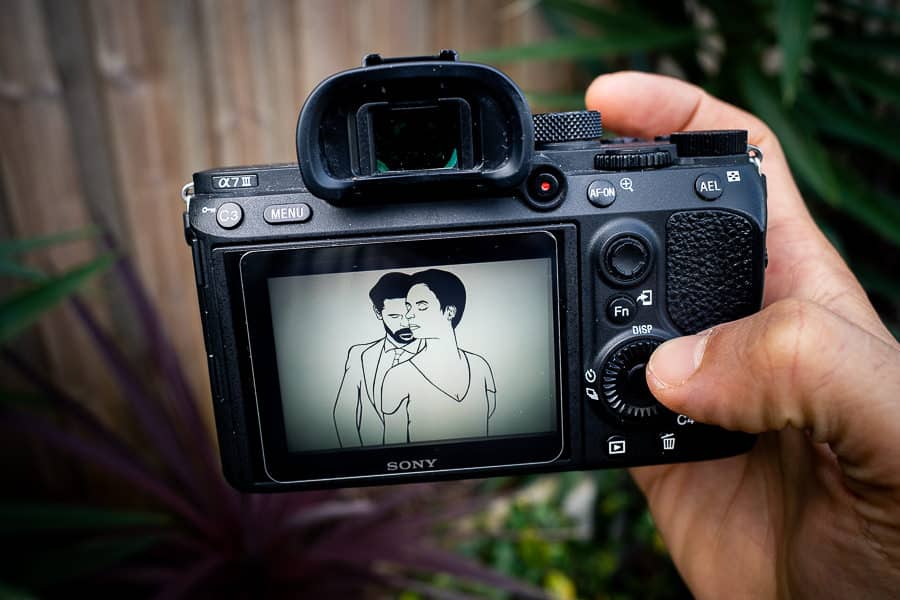










Andy Schmid
Marine & Underwater | Last Updated: September 5, 2022
I grew up landlocked in Switzerland close to Zurich and didn’t have any connection to the ocean and its inhabitants until my mid-twenties. It was on a trip to Mexico in 2003 when I became really fascinated by the ocean and started diving.
I immediately fell in love with everything about it and have become passionate about it ever since.
Only after a few years and a number of dive courses logging roughly two hundred dives did I pick up a Canon point-and-shoot camera as my first underwater camera. I learned about underwater photography step by step, steadily improving my skills and equipment.
Over the years, I went through various Canon cameras until I felt like I had come to the limit of what could be done with them, and that’s when I switched to a Canon DSLR.
Although underwater photography has become my absolute passion, I’m still an underwater lover first, and I don’t mind getting in the water and exploring what lies beneath the surface without a camera.
Nowadays, I also do a lot of snorkelling and freediving activities where less gear is needed, and other wildlife encounters are possible, especially offshore where large pelagic mammals can potentially be seen, such as whales and dolphins that have to come to the surface every now and then to breathe.
Depending on where my travels take me, I shoot anything from the smallest ocean creatures such as pygmy seahorses and nudibranchs to the biggest ocean inhabitants such as whales and sharks. I find that wherever I go, there is always something special and unique to a place and so I try focussing on capturing that.
Canon EOS 5D Mark IV – Ever since I started photography, I have used Canon cameras. I was always happy with what they could do and became familiar with shooting them manually. I liked the way these cameras worked pretty much right away, which is why I have never switched brands.
Over the past five years, the 5D Mark IV has been an amazing camera, and I am still learning new things with it all the time. I think that I will use it for at least another couple of years before even thinking about switching to a mirrorless camera.
Canon EOS 6D Mark II – On dive trips, there are always so many things above water that I like to photograph and with the 5D Mark IV usually being inside an underwater housing, I need a second camera for topside photography.
The Canon 6D Mark II is similar to the 5D Mark IV when it comes to working with controls, and the difference in quality is not that great. I was also thinking about the price as well when I purchased it.
DJI Mini 2 – For aerial shots, I use the smallest drone out of DJI’s catalogue. I wouldn’t call it professional, but when the light conditions are good, impressive results are still possible.
It is super compact and light which makes travelling a breeze, especially considering all the other photography and dive gear that needs to come along on trips.
Canon EF 8-15mm f/4L Fisheye USM – My go-to lens for anything wide-angle underwater, allowing me to get really close to any subject.
Canon EF 16-35mm f/2.8L III USM – This used to be my go-to lens for wide-angle underwater photography, but I don’t tend to use it much because I hardly ever use the zoom. With the 16mm rectilinear, I still can’t capture as much as with the fisheye.
This lens is also much bigger and makes my setup much bulkier, which I don’t really like. I nowadays mostly use this lens for topside photography.
Canon EF 50mm f/1.8 STM – A lens that I only use for topside photography. Very compact and affordable but quite solid when it comes to quality. Works great for street photography, portraits and stuff like that.
Canon EF 100mm f/2.8L Macro IS USM – I use this lens for anything macro, be it underwater or above. For really small creatures, I add a wet diopter to capture as much detail as possible (Nauticam SMC-1 or INON UCL-165 depending on the subject’s size and degree of details I want to capture).
Canon EF 100-400mm f/4.5-5.6L IS II USM – Another lens that I only use for topside photography and my favourite lens to shoot wildlife above water due to its versatility.
Underwater Housing, Dome Ports, Strobes & Arms
Nauticam NA-5DMKIV – This is a housing specifically designed and manufactured for the Canon 5D Mark IV. Nauticam produces very robust housings and focuses on the easiest possible accessibility of all buttons and features of the camera.
I find this very important while in the water because often things happen very fast, and without being able to change the settings very quickly, good opportunities might be lost.
The vacuum system that indicates whether there might be a leak gives me extra security since I’m not the most careful user, and my setup needs to be able to take a good beating while out at sea.
Various dome ports: depending on the lens I shoot with, I either use an 8.5” acrylic dome port by Nauticam, a 4” mini glass dome port by Zen or a macro port by Nauticam.
Sea & Sea YS-D2 Strobes x 2 – As soon as you enter the water and the deeper you dive, the more the natural colours fade as there is less ambient light available. That’s why external light sources are essential for underwater photography.
These strobes are quite compact and yet powerful enough for what I do. They also run with AA batteries which I find to be a huge advantage over proprietary battery packs, which many other manufacturers use. I use rechargeable Panasonic Eneloop pros.
To connect the strobes to the housing, I use fibre optic cables by Nauticam and then to attach the strobes to the housing, I use a combination of 5” and 8” arms with clamps by Ultralight.
I will also add some foam floats to make sure my setup has slightly positive buoyancy. This ensures that if for whatever reason, I have to let go of my setup, it will find its way to the surface with a chance of recovery. With a negatively buoyant setup in deep waters, the gear can be lost forever.
Lowepro Pro Runner BP 450 AW II – I often can’t believe what I can fit into this bag, sometimes with a total weight of twenty kilograms plus. Because it is slightly smaller than the maximum carry-on luggage size and it’s a backpack, I never have discussions when checking in, even though it’s way too heavy.
Except for my dome port(s) and the drone, I get pretty much everything into this bag that I travel with, including my notebook, chargers, batteries and other accessories.
Manfrotto MKBFRA4-BH Befree – Because my gear is bulky and heavy, I need a lightweight tripod that I can attach to the outside of my backpack, making travelling easier. As I’m not a topside shooter, this tripod does the job for me. I mainly use it for night photography of skies, Northern Lights or sceneries.
Joby GorillaPod – I use this compact and lightweight tripod for underwater shoots. Only the screw to mount the camera on is metal, so taking it in the water is never an issue.
Hardware & Software
I use Adobe Lightroom Classic as a library and basic RAW editing tool. I switch to Adobe Photoshop for more detailed edits as required. The editing work is on a MacBook Pro with a 27” external DELL U2720Q monitor and a Wacom Intuos Pro Medium (PTH-651) tablet when at home.
Dive Gear
ScubaPro regulators and BCD
Billabong and Polo Sub wetsuits
Cressi mask & snorkel
Mares Avanti Quattro Power fins
Mares Razor Pro freediving fins
Uemis ZURICH dive computer
Based on errors or problems I’ve experienced myself, here is some advice:
Don’t leave your lens cap on when you put your camera inside your housing and make sure your lens is set to AF unless you explicitly want to have it on MF. Both of which have happened to me 🙈
A proper routine every time you change something on your setup like a lens, storage card or battery will help to minimise errors. Best to take some test shots with everything on, including the strobes and make sure the photos are stored on the storage card and everything is working fine before going underwater.
Regular maintenance is a must (cleaning, greasing o-rings, …) This will help to prevent your gear from flooding.
If you are into underwater photography or want to get into it, never forget to enjoy what you are experiencing and just put your camera down every now and then. Don’t miss out on the actual experience because you are chasing a photo or video.
If reading this has caught your interest, please follow my Instagram to see my latest work.














